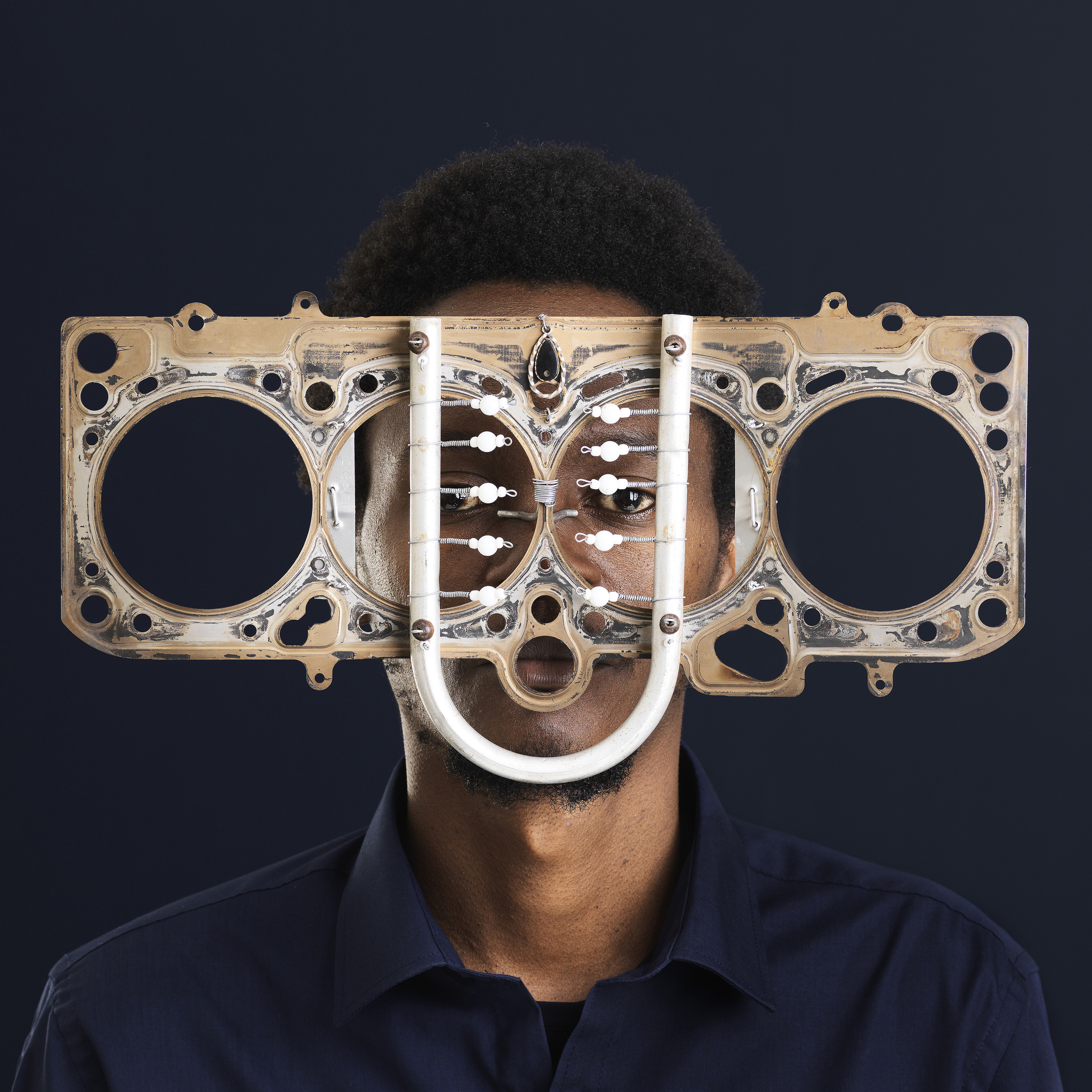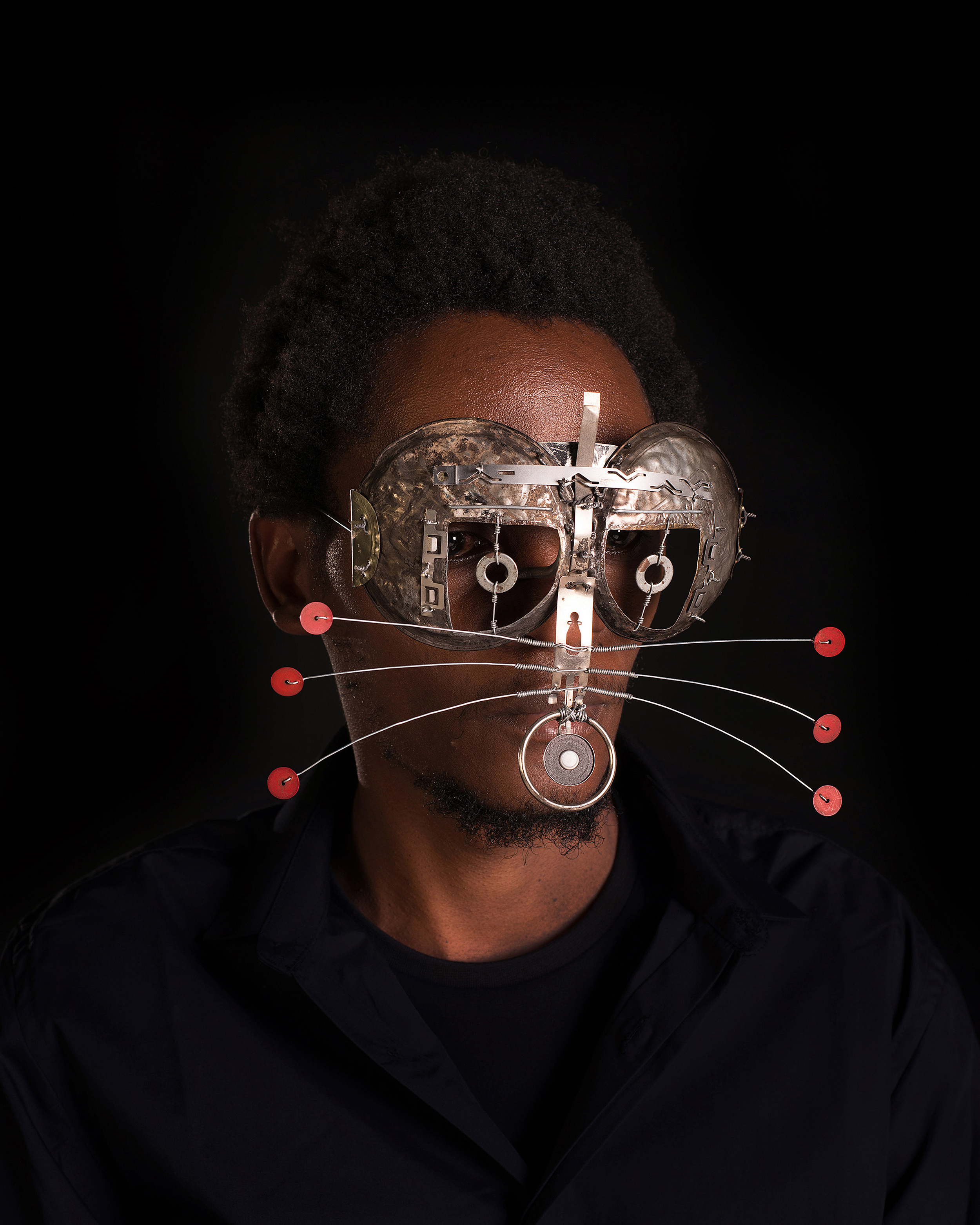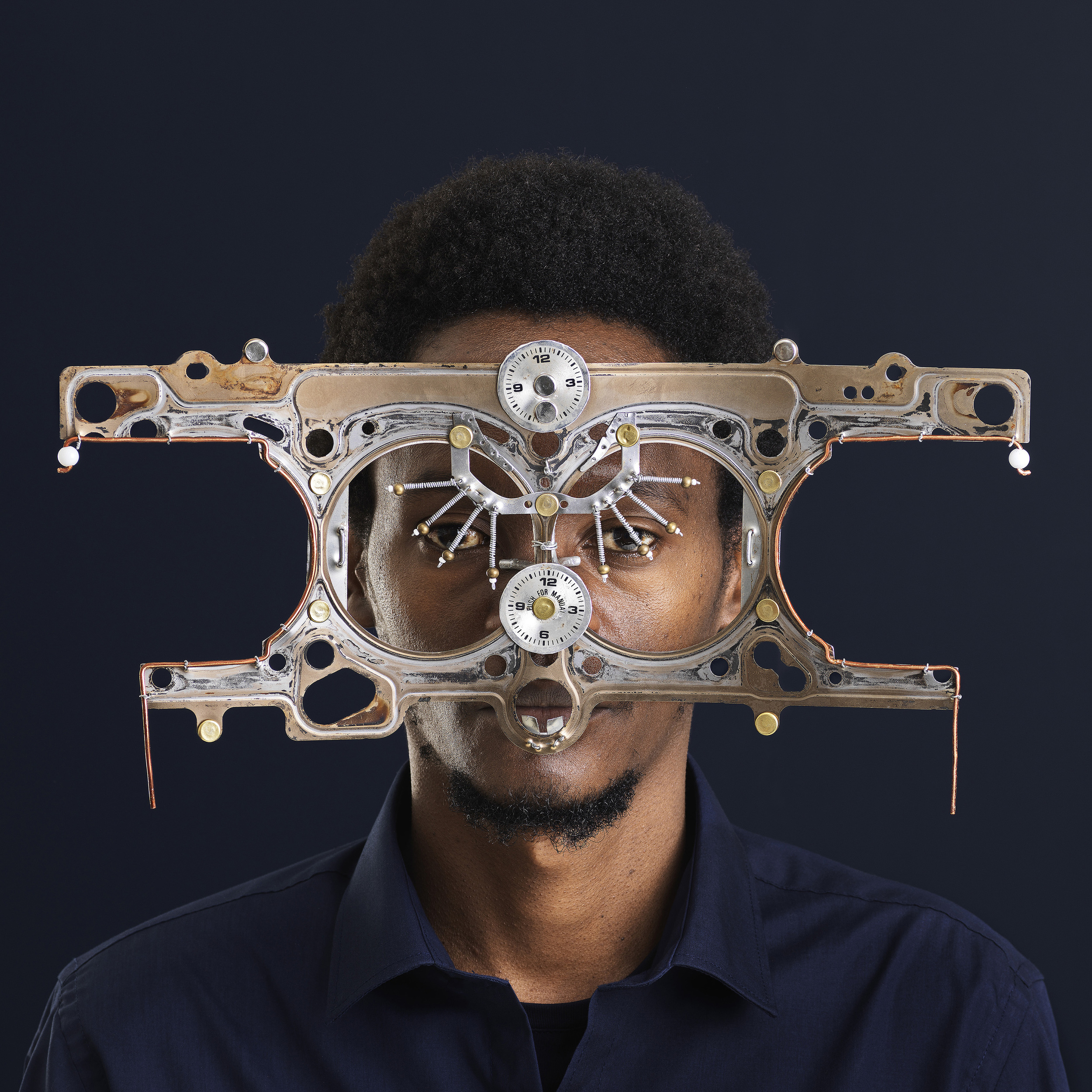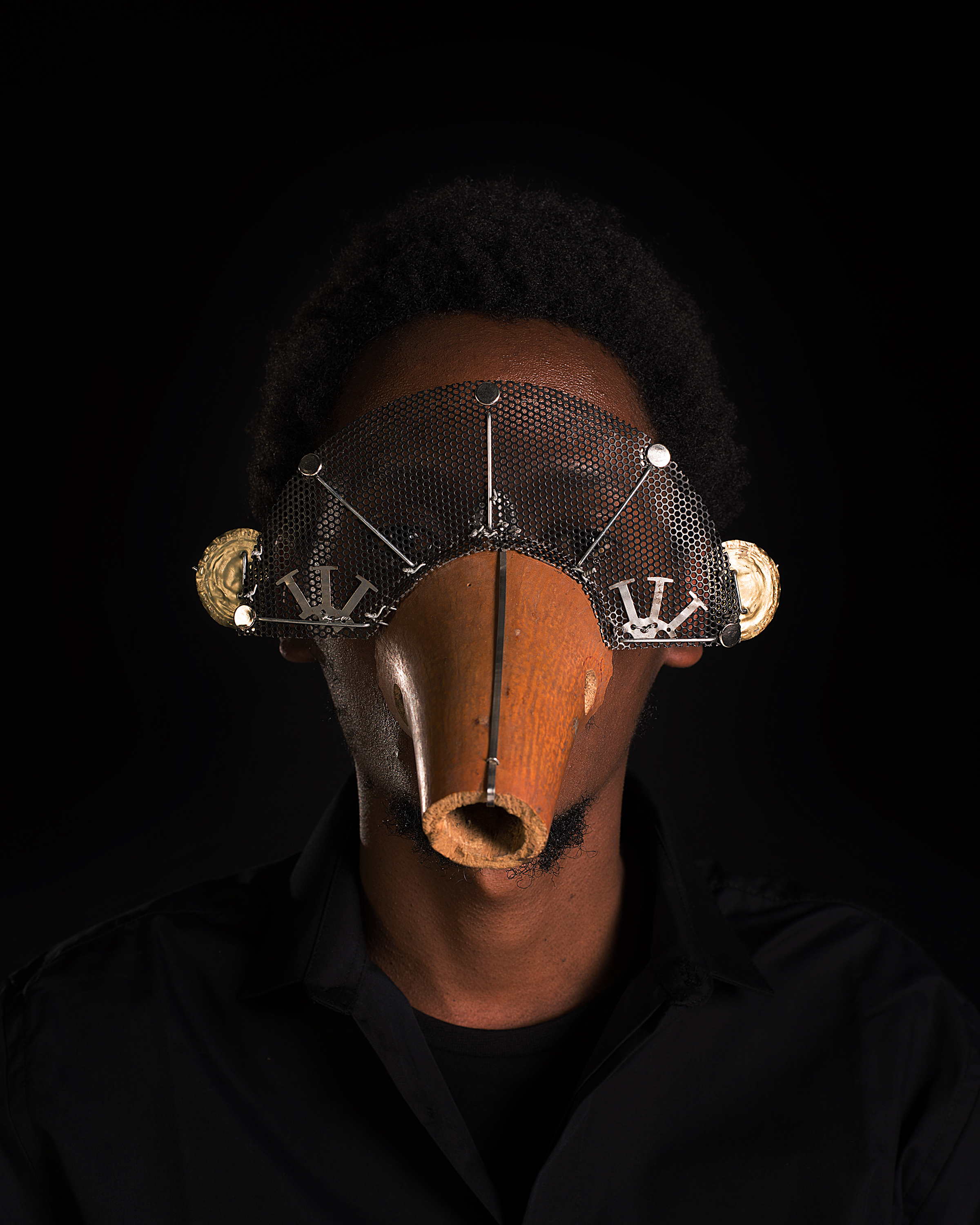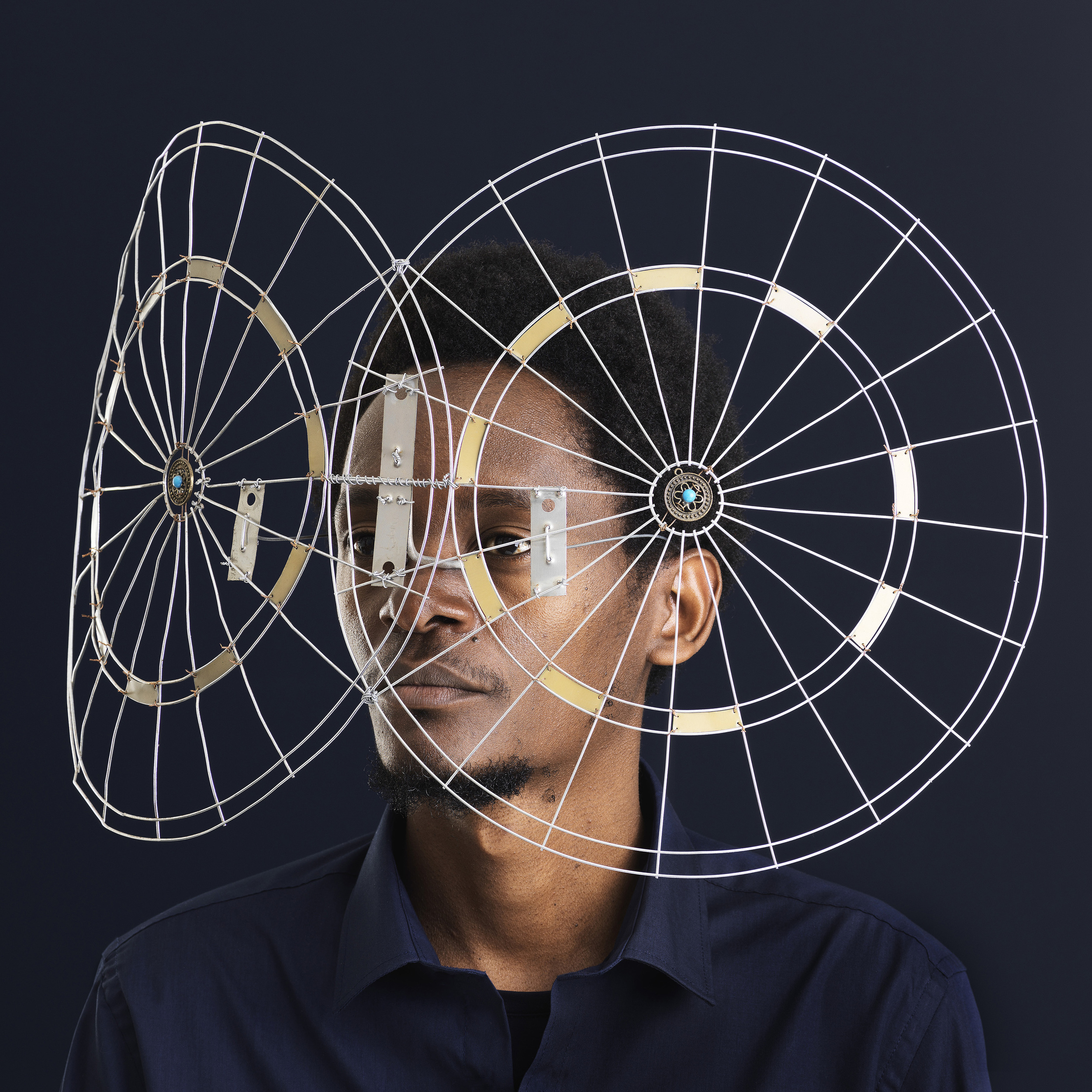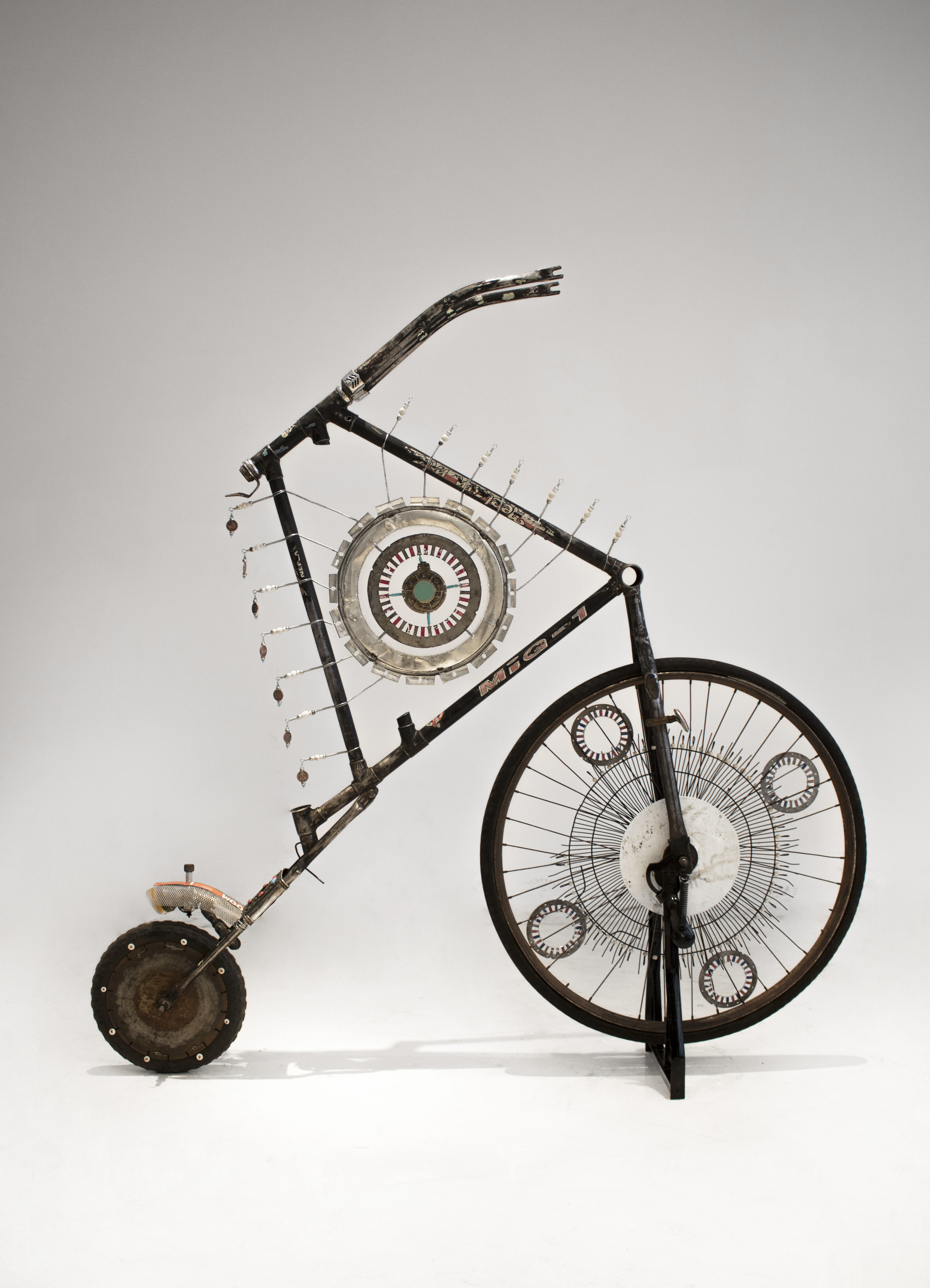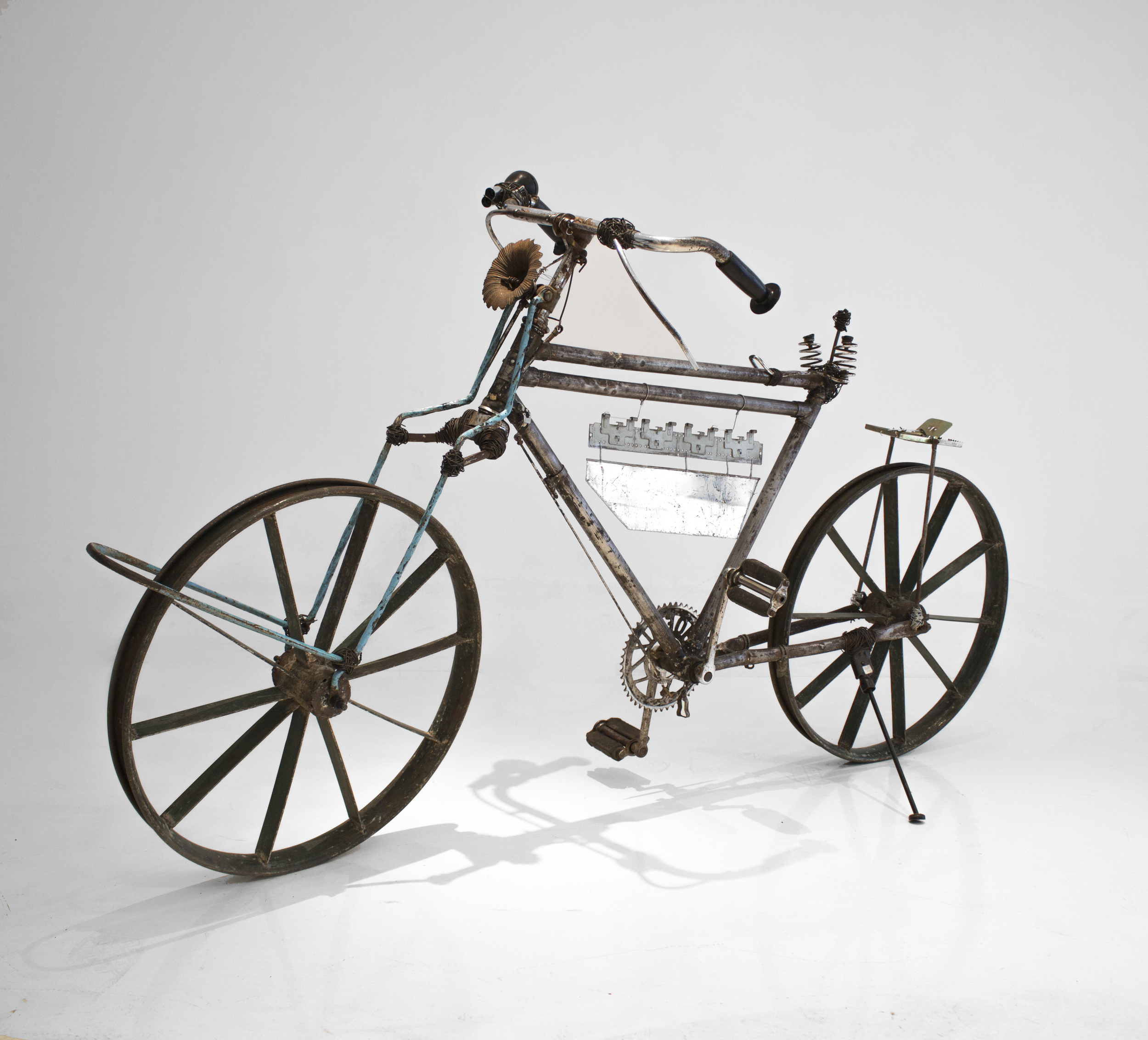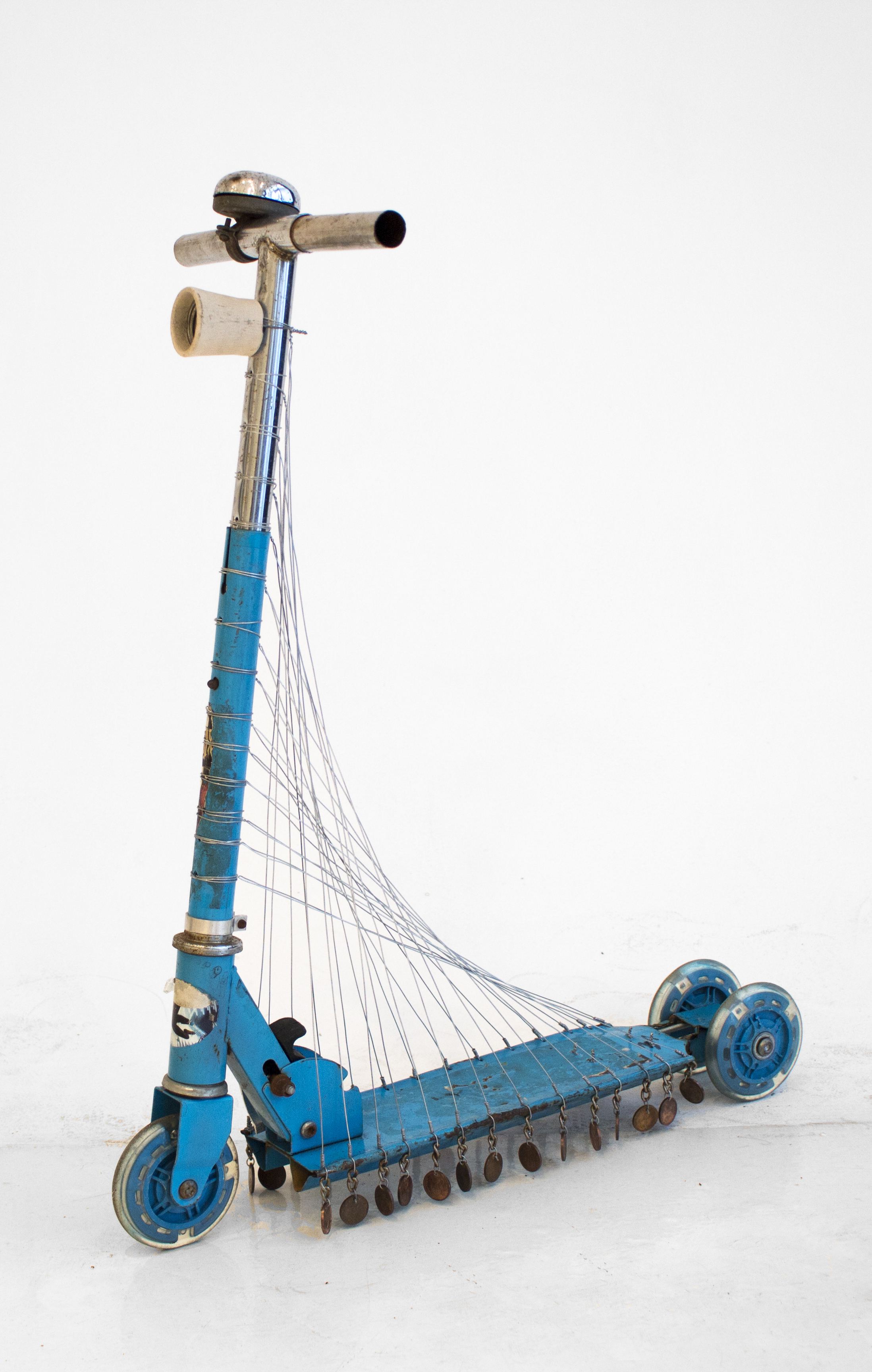The Kenyan artist takes to
two wheels for his latest body
of work, Black Mamba
“My glasses are known a bit now,” says Cyrus Kabiru, somewhat understating the success of C-Stunners. The artist’s on-going series of sculptural spectacles made from found objects he picks up while roaming around his native Nairobi, have garnered serious attention in recent years. During 2015 alone Kabiru has participated in Making Africa at the Vitra Design Museum in Weil am Rhein, Africa: Architecture & Identity at the Louisiana Museum of Modern Art in Humlebæk, Unorthodox at the Jewish Museum in New York, the Beyond Borders Beautfort Triennial and Lumières d’Afriques at the National Theatre of Chaillot in Paris as well as enjoying a solo show at his Cape Town gallery Smac. His new body of work takes another humble object as its inspiration, Kenya’s erstwhile ubiquitous fixed gear black mamba bicycle.
“My dad said that if I performed well, he would buy me one. Eventually he gave me a spoilt bicycle without any wheels. I had to work out how to fix it,” Kabiru recalls of his childhood. Meanwhile his father did business on his own black mamba, buying, selling and transporting goods from its extended seat. “He’d send me to pick up things on the bicycle but I was small and it was big, so I found it hard,” he says. “And he had an alarm on it, which he’d switch on 1km before he reached home so all the kids in the area came out and ran along singing songs about him. Baba John! Baba John! But at the end of each day I was supposed to wash it – every spoke and wire. He made me hate bicycles. But I still have that first bike he gave me.”
Kabiru’s reimaged black mambas - both physical and filmed (his first video is entitled The Death Of Black Mamba) - commemorate their significance as Kenyans increasingly swap bicycles for motorbikes. “It’s about where we are headed. Motorbikes in Kenya are killing our generation. I heard that the government bought 5million from China and 2million are in police custody due to accidents. Plus they’re making us lazy and we’re not exercising. Kenyans are thin, we are the best athletes. But soon we’ll lose our talent.”
One of his black mambas resembles a canon made from a car’s exhaust. “So many African countries are fighting. In Kenya there is Al Shabaab, in Nigeria Boko Haram. So we make money to buy guns to protect our wealth. Then the next level is bazookas and bombs. We are finishing ourselves. We need to do something about that. I don’t relate my work to politics, but sometimes I speak about these things.”
"My work has everything to do with my
dad. First the glasses. Now the bicycle. He
raised me well and showed me the future"
Kabiru has always been more about actions than words. Born in 1984 in Eastlands Nairobi, he was one of six children living in a two-bedroom home opposite a refuse dump. Inspired by this view from his window, and a story his father told about how he accidentally broke his own glasses as a boy, he started making eyewear out of discarded cutlery and bottle tops. He was disinterested in school and got his friends to do his homework in exchange for specs. His father wanted him to study electronic engineering at university but he insisted on pursuing life as a self-taught artist instead.
“My work has everything to do with my dad. First the glasses. Now the bicycle. He raised me well and showed me the future. He wasn’t the kind of parent to give you things. Beyond food, clothes and shelter, the next step was you.” So he moved out in 2007 and got a space at Kuona Trust visual arts centre. He started exhibiting his paintings and sculptures locally and by 2011 he had gained international exposure. He became a TED fellow in 2013 and since then he’s been hailed everywhere from Milan Design Week and MTVBase thanks to the broad appeal of his work that straddles film, fashion, photography and performance.
Some peg C-Stunners as a social commentary on how Africa is too narrowly framed by the rest of the world, others say they widen the vision of African art. And by upcycling trash he’s put in league with transformative talents such as El Anatsui, Romuald Hazoumè and Gonçalo Mabunda. But for the artist himself, it’s simply instinctive. “I’ve tried to stop making them but then I have a good idea to make another one using a different material,” he says. “Most of my projects are free style. I don’t plan tomorrow. And I’m very happy.”
Photography courtesy of Smac gallery
Visit Cyrus Kabiru


